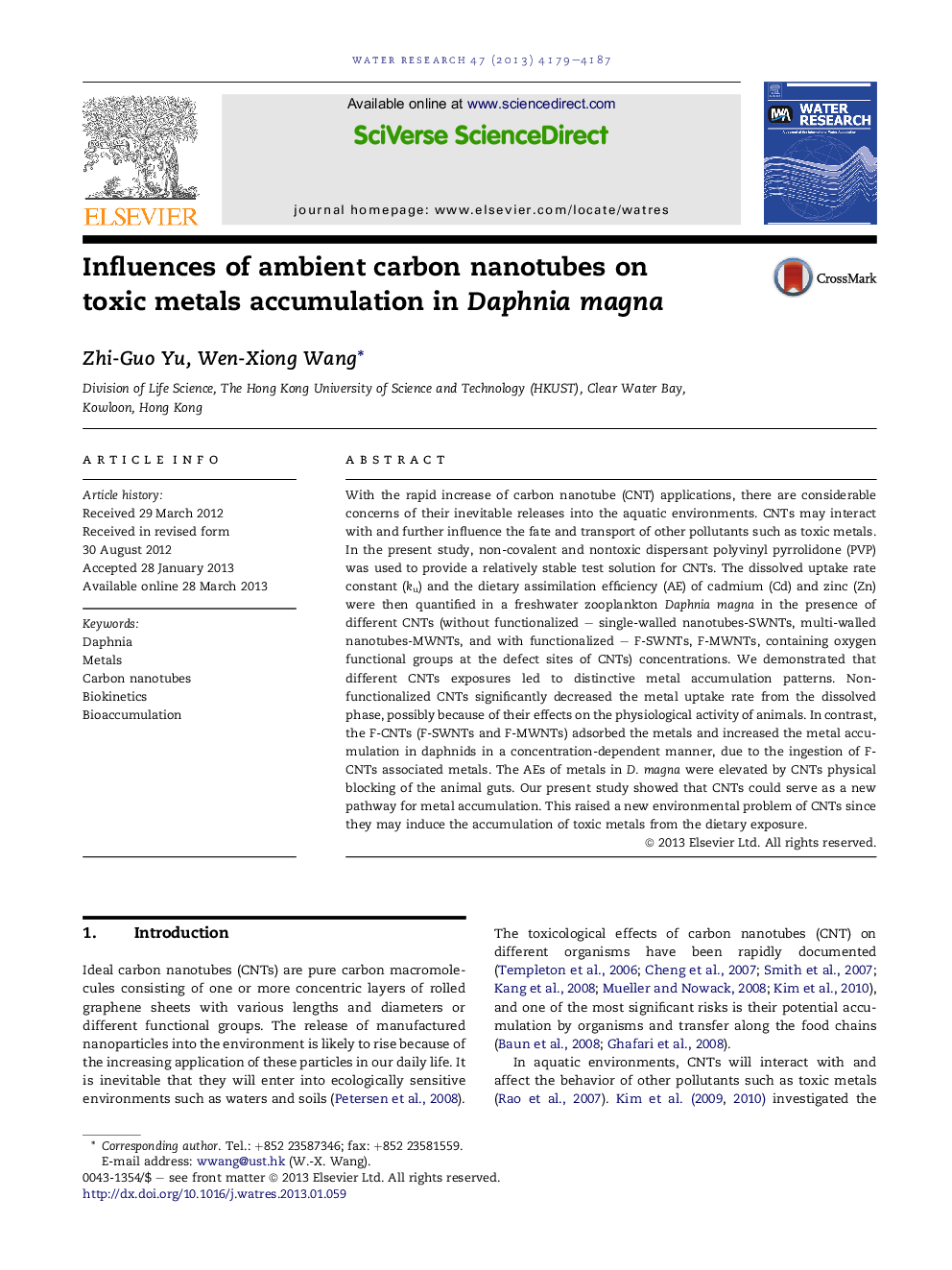| Article ID | Journal | Published Year | Pages | File Type |
|---|---|---|---|---|
| 4481787 | Water Research | 2013 | 9 Pages |
•Different carbon nanotubes (CNTs) exposures led to distinctive metal accumulation patterns in Daphnia.•Non-functional CNTs significantly decreased the metal uptake from the dissolved phase.•Functional-CNTs adsorbed the metals and increased the metal uptake from the dissolved phase.•Metal assimilation was elevated by CNTs due to their physical blocking of animal guts.•CNTs could serve as a new pathway for metal accumulation in daphnids.
With the rapid increase of carbon nanotube (CNT) applications, there are considerable concerns of their inevitable releases into the aquatic environments. CNTs may interact with and further influence the fate and transport of other pollutants such as toxic metals. In the present study, non-covalent and nontoxic dispersant polyvinyl pyrrolidone (PVP) was used to provide a relatively stable test solution for CNTs. The dissolved uptake rate constant (ku) and the dietary assimilation efficiency (AE) of cadmium (Cd) and zinc (Zn) were then quantified in a freshwater zooplankton Daphnia magna in the presence of different CNTs (without functionalized – single-walled nanotubes-SWNTs, multi-walled nanotubes-MWNTs, and with functionalized – F-SWNTs, F-MWNTs, containing oxygen functional groups at the defect sites of CNTs) concentrations. We demonstrated that different CNTs exposures led to distinctive metal accumulation patterns. Non-functionalized CNTs significantly decreased the metal uptake rate from the dissolved phase, possibly because of their effects on the physiological activity of animals. In contrast, the F-CNTs (F-SWNTs and F-MWNTs) adsorbed the metals and increased the metal accumulation in daphnids in a concentration-dependent manner, due to the ingestion of F-CNTs associated metals. The AEs of metals in D. magna were elevated by CNTs physical blocking of the animal guts. Our present study showed that CNTs could serve as a new pathway for metal accumulation. This raised a new environmental problem of CNTs since they may induce the accumulation of toxic metals from the dietary exposure.
